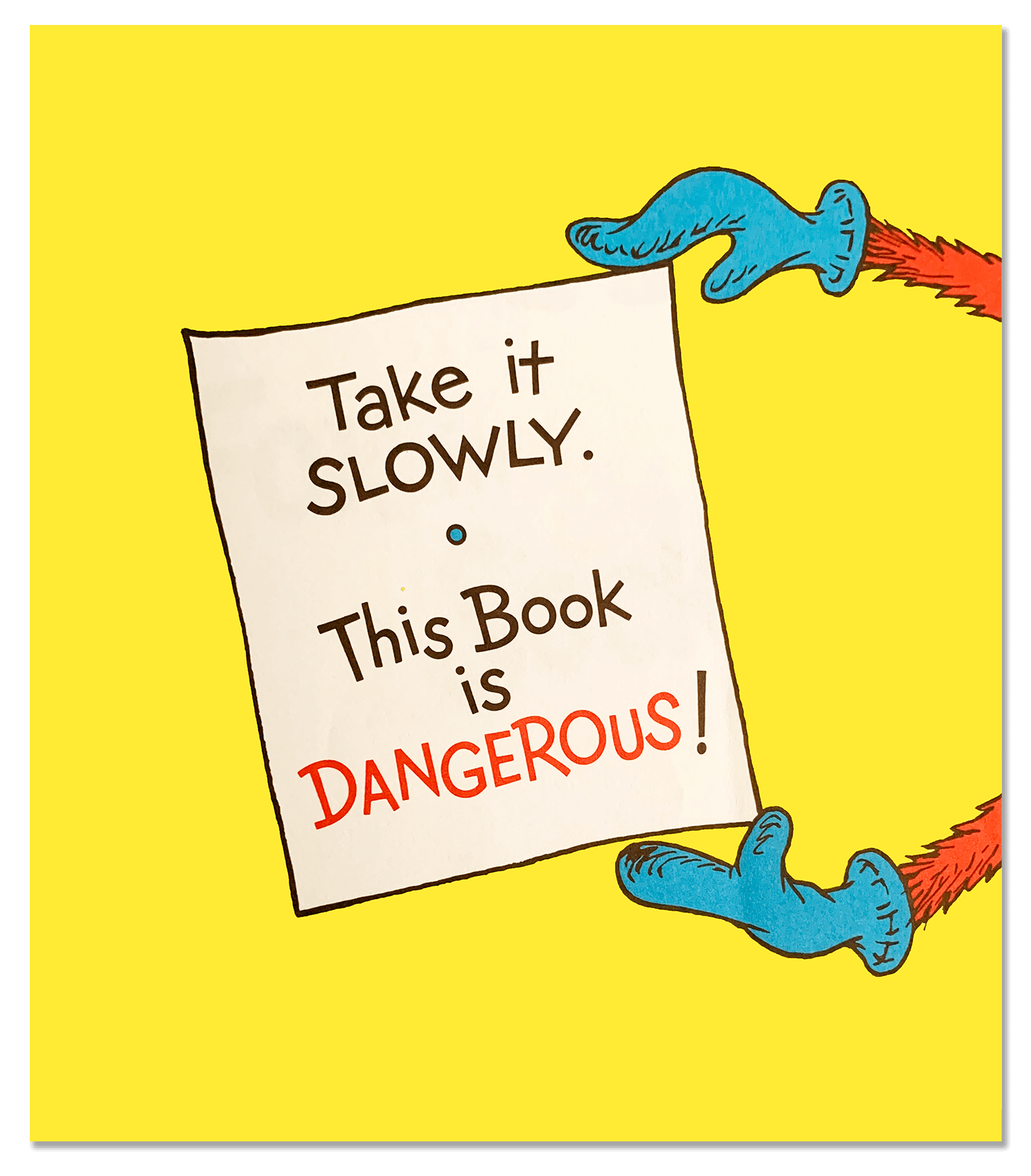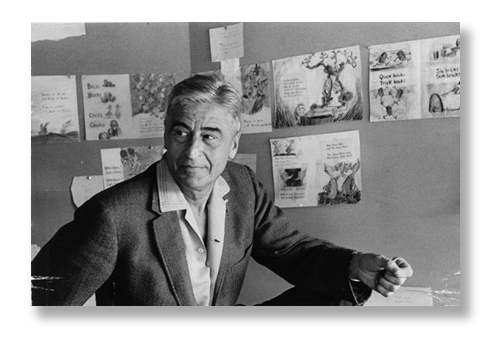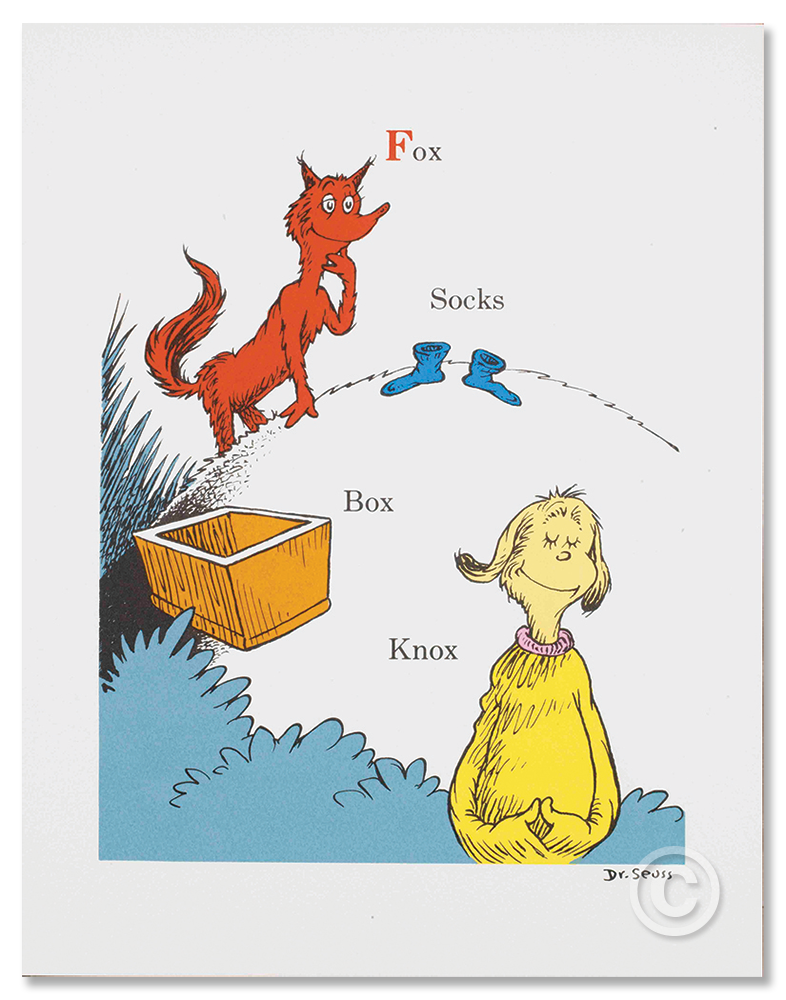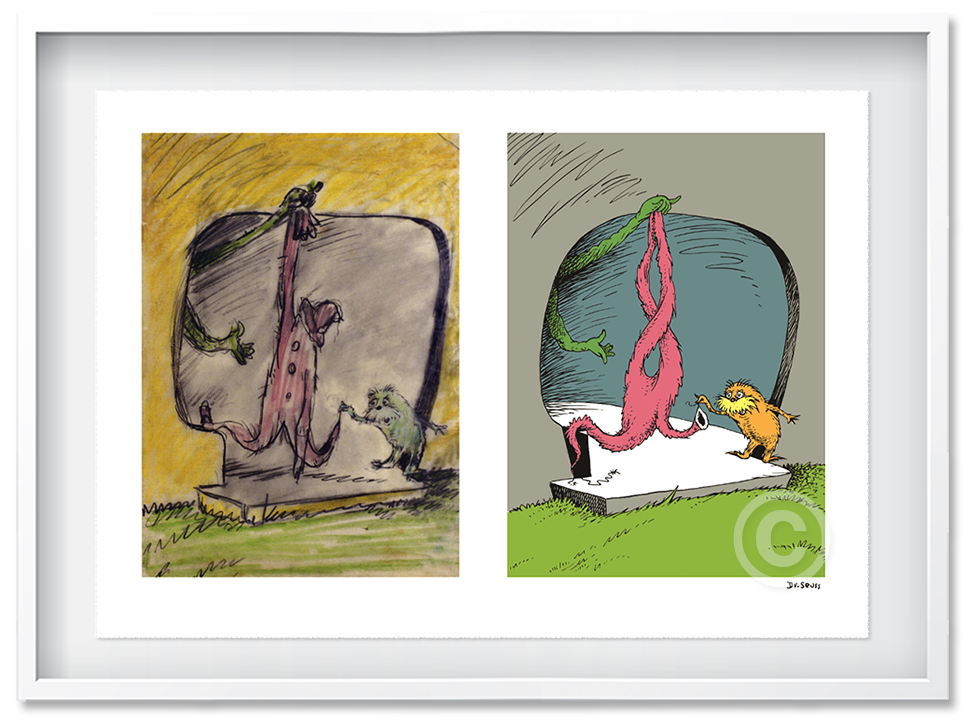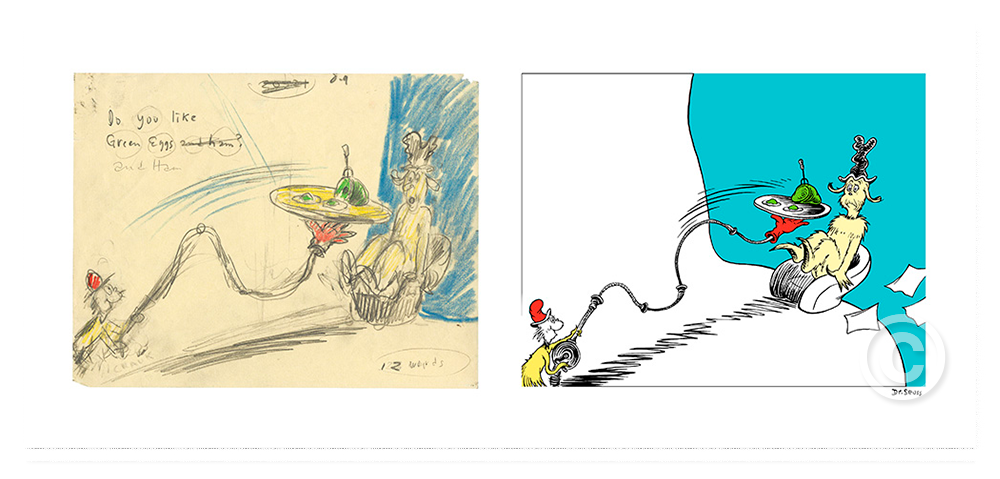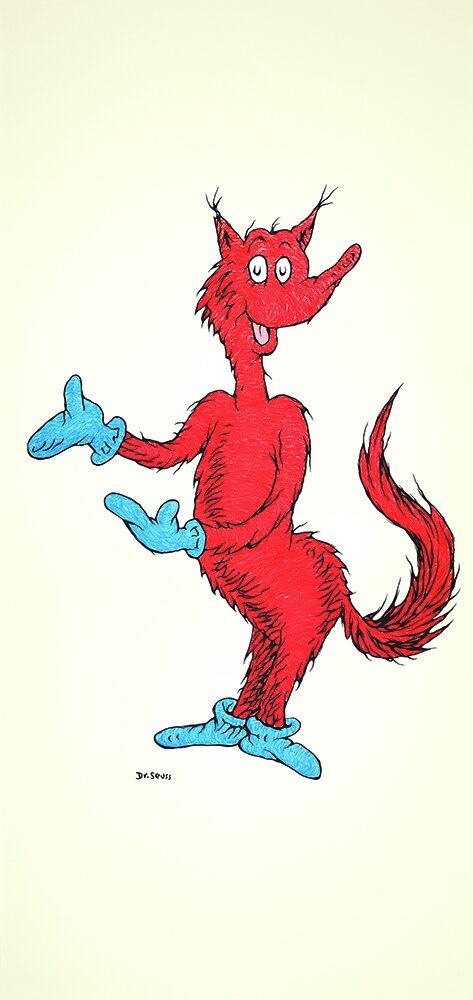SLY AS A FOX
Sly as a fox. The phrase immediately conjures up an image of a clever person
who knows exactly what they are doing, no matter how outrageous it may appear.
Theodor Seuss Geisel (aka Dr. Seuss), with his 1965 Fox and Socks, shows that he may be the cleverest fox of all, encouraging us down a path of tongue twisters and silliness that tests even the most patient readers. Much like the book’s “Knox” character, we are sent on a surreal adventure of language and imagination. Most of us try, yet fail to make it through, at least the first time.
Dr. Seuss even warns us at the beginning of the book, “Take it Slowly, This book is dangerous.”
However, what becomes clear is that the real danger is not in trying, but that when we fail, not trying again. Ted knew this all too well, understanding that we fall short more times than we succeed.
“What becomes clear is that the real danger is not trying and failing.
The real danger is in not trying again.”
The outrageous words and surreal images of Fox in Socks bring us to a greater understanding of Dr. Seuss. He always leaves us laughing – therein lies his genius, making him the slyest fox of all.
Knox in box. Fox in Socks.
(single)
Knox in Box. Fox in Socks. (Single)
Pigment Print on Acid-Free Paper
Image Size: 14 inches x 11 inches, Paper Size: 17.5 inches x 14 inches
Limited Edition of 2500 Arabic Numbers and 155 Collaborators’ Proofs
Knox in box. Fox in socks.
(diptych)
Knox in Box. Fox in Socks. (Diptych)
Pigment Print on Acid-Free Paper
Image Size: 14 inches x 11 inches (each image), Paper Size: 17.5 inches x 26.5 inches
Limited Edition of 850 Arabic Numbers, 99 Patrons’ Collection prints,
155 Collaborators’ Proofs, 5 Hors d'Commerce, 2 Printer's Proofs
This iconic image appears in the second spread of the book and is particularly noteworthy when one sees how the image changes in tone from the concept drawing to the final book drawing.
In the concept drawing, Ted has the two figures somewhat at odds, with the Fox having a certain swagger as he walks away with his backside facing Knox, his head held high and his eyes closed. The two seem uninterested in connecting with each other.
However, Ted changes this in the final drawing, positioning the Fox next to the box with a proud smile. The Fox has succeeded in getting Knox through one of the first challenges and enticed him to continue along on the journey by making this early challenge fun. This change in dynamic allows the two characters to be in relationship with one another from the beginning.
Despite losing his patience many times later in the book, Knox ultimately does not give up on the Fox’s game and instead triumphs at the end by making it his own. In a subtle nod to the sly fox’s lesson, Knox ends the book with the phrase, “Thank you for a lot of fun sir!”
“Dr. Seuss changed the dynamic
so his characters would be in relationship
with one another from the beginning.”
What is a Knox in a box?
“Knox in box” may have been ruminating in Ted Giesel’s mind since early childhood.
The Knox Automobile Company (1899–1927), located in Ted’s hometown of Springfield, Massachusetts manufactured cars, buses, fire engines, trucks, and the boxy-looking Martin Tractor pictured below. The Geisel family brewery (run by Ted’s grandfather) was one of New England’s largest and likely purchased Knox trucks to transport the company’s products.
Diptych Collection II
Knox in Box. Fox in Socks. • Do You Like Green Eggs and Ham? • A Thneeds a Fine Something that all People Need
This rare collection reveals the evolution of Dr. Seuss’s creativity and his tireless attention to detail. Each artwork shows an early-stage concept drawing presented alongside the final-line illustration.
Upon close examination, we see the subtle changes made between the first iteration of these drawings and their final form. Ted would relentlessly revise each image of every book, struggling to convey the purest clarity of his ideas. The goal was to ensure that each image afforded the greatest impact on his broader narrative.
Ted Geisel (aka Dr. Seuss) writing Fox in Socks, photograph collection of Audrey Geisel
Ted’s story development would begin by filling the corkboard walls of his studio with early concept drawings. Then, in an editing process that could easily span a year, he would meticulously pull them down, redraw them, and tack them back up until he felt he had arrived at the best version of each image. It was at that point, when he would finally put pen and ink to paper, creating the final-line drawings that would appear in the finished volume.
“Thank you for a lot of fun, sir!”


